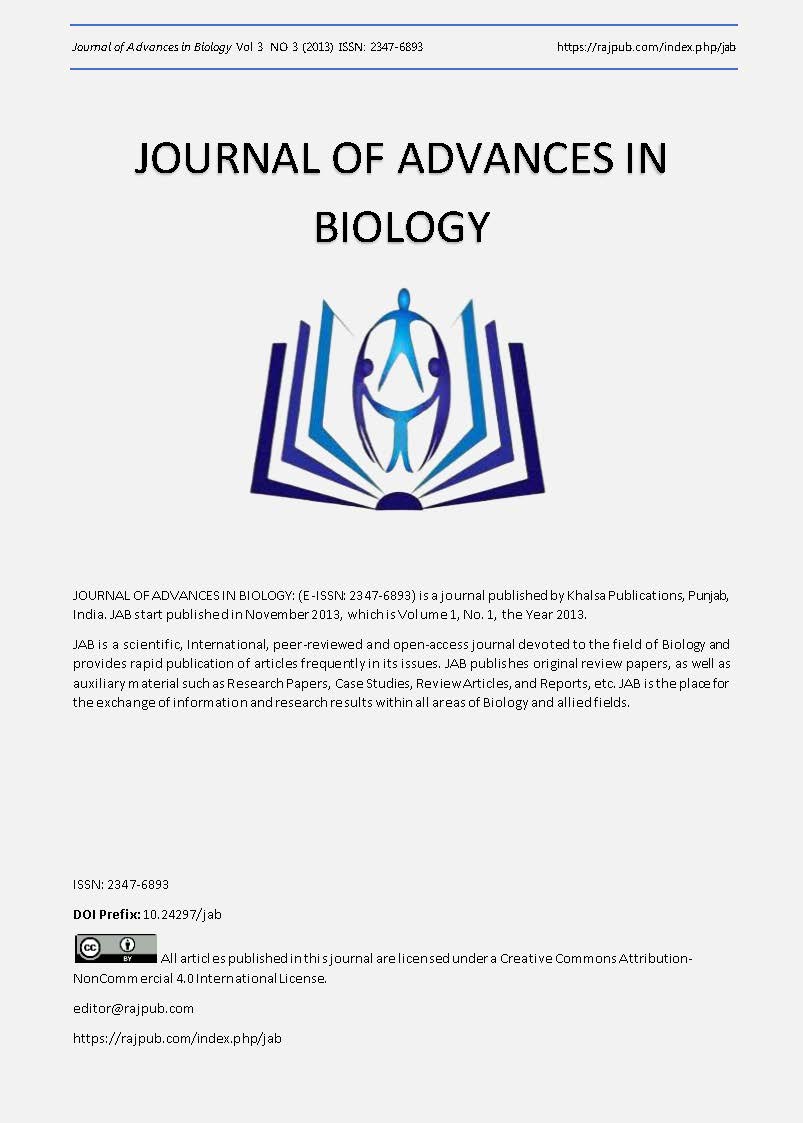Comparison of Conventional and PCR based detection of Plasmodium falciparum and Plasmodium vivax infections in human blood
DOI:
https://doi.org/10.24297/jab.v3i3.1930Keywords:
Malarial infection, Plasmodium falciparum, Plasmodium vivax, Nested PCRAbstract
Blood samples from the 100 malarial parasite (MP) negative suspected individuals and 50 malarial patients were collected in EDTA vacutainers. Genomic DNA from each individual was amplified using nested PCR assay for 18S smaller ribosomal subunit gene to detect malarial parasites in low grade parasitemia. Data was statistically analyzed afterwards. MP test diagnosed only 1% malarial infection in collected blood samples whereas it increased up to 4% using molecular methods. MP test was unable to detect mixed infection whereas the nested PCR assay detected 3% P. falciparum and 4% P. vivax mixed infections in blood samples. Sensitivity (P value) of nested PCR was statistically 0.00 which showed that PCR technique is highly significant for detection. From the present data it is concluded that PCR is more sensitive and specific technique to be used as a diagnostic tool for malarial parasite as compared to the traditional microscopical analysis as practiced in all hospitals. It should be applied in biochemical labs (pathological labs) of hospitals so that it helps in reduction of false negativity of malarial diagnosis.
Downloads
Downloads
Published
How to Cite
Issue
Section
License
 All articles published in Journal of Advances in Linguistics are licensed under a Creative Commons Attribution 4.0 International License.
All articles published in Journal of Advances in Linguistics are licensed under a Creative Commons Attribution 4.0 International License.




